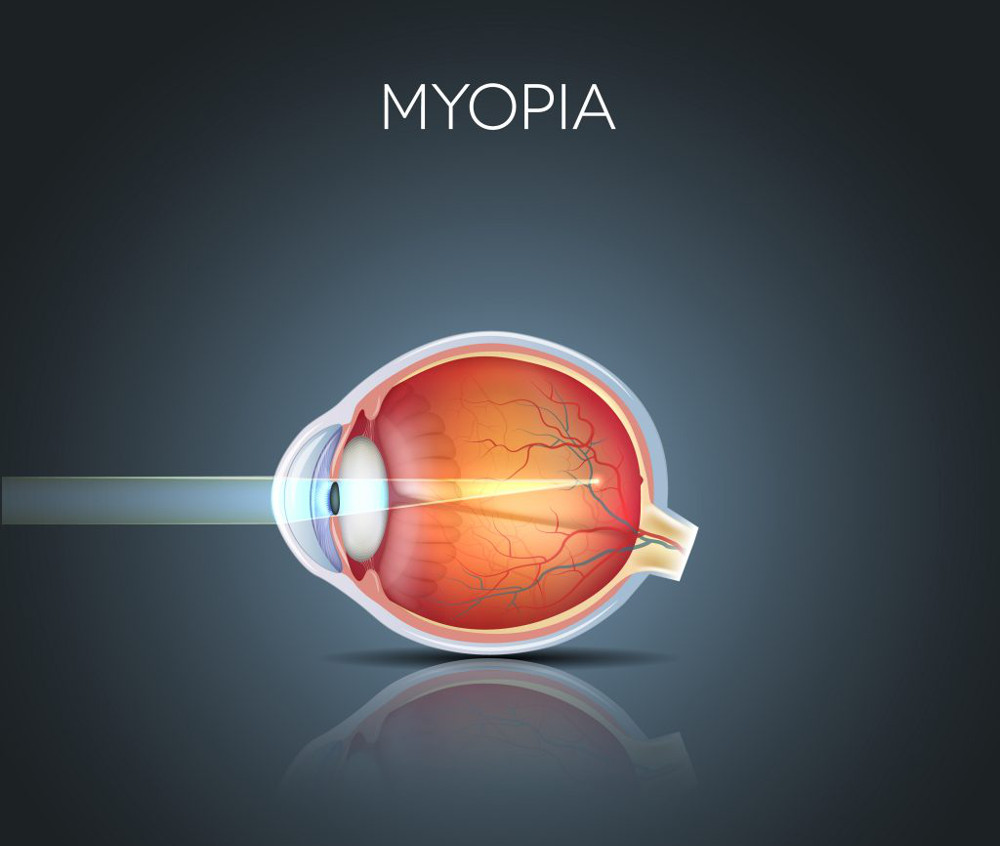9 Causes of Blurred or Distorted Vision
-

Are you having trouble seeing things clearly to the point that it’s interfering with your day-to-day? Blurred vision is a common issue that many people deal with at one point or another. It may be benign and short-lived, or it could be indicative or something more serious.
Any sudden change in vision is a concern that should be addressed as soon as possible with an eye doctor. On the other hand, a gradual deterioration of vision marked by blurring could simply be part of a natural, age-related change. Regardless of the severity, it’s important to address the change so that you can identify the cause and weigh treatment options.
Here are nine common causes of blurred vision:
-
1. Myopia

Myopia, or nearsightedness, is the most common refractive error. (Refractive errors are abnormalities in the shape of the eye that prevent the eye from bending light properly.) Although myopic people are able to see things clearly up close, the condition causes blurred vision for far away objects. This can be particularly noticeable when driving. Although you can clearly identify everything in the car, such as the radio or gauges, you may experience great difficulty reading road signs.
Myopia can affect one or both eyes and can be easily corrected with eyeglasses, contact lenses or refractive surgery (LASIK, PRK, etc.).
-
2. Hyperopia

Hyperopia (or farsightedness) is another common refractive error and the exact opposite of myopia. Whereas hyperopic people are able to see faraway objects clearly, the condition causes blurred vision for near objects. Hyperopia makes things like reading a book or working on a computer difficult without causing eye strain or fatigue.
As is the case with myopia, hyperopia can affect one or both eyes, and can be corrected with eyeglasses, contact lenses or refractive surgery.
-
3. Presbyopia

Presbyopia is an age-related condition that typically affects people over the age of 40. Like hyperopia, presbyopia affects near vision, making close objects appear blurred. The difference between the two conditions relates to what causes the near vision issues. Hyperopic vision is caused by a change in the shape of the eye, whereas presbyopia is caused by the loss of “accommodation,” or the eye’s ability to change focus as the distance to an object changes.
Treatment for presbyopia is not quite as straightforward as myopia or hyperopia, but there are a variety of options, such as bifocals or progressive lenses (eyeglasses or contacts), laser surgery, corneal inlays or conductive keratoplasty (CK). Evaluate your options with an ophthalmologist experienced in treating presbyopia.
(Read more: 7 treatments for presbyopia correction)
-
4. Astigmatism

Astigmatism is a condition marked by an irregularly shaped cornea. This irregularity impacts the manner in which light is focused on the retina, causing distorted, blurred vision across all distances. A common symptom of astigmatism is the appearance of double images under low contrast conditions, such as oncoming headlights at night. There are a number of corrective treatment options for astigmatism including eyeglasses, contact lenses and refractive surgery.
-
5. Dry Eye

Dry eye can be a nuisance in a variety of ways, causing itching, burning and redness of the eyes. But chronic dry eye can also cause distorted and blurred vision. Minor cases of dry eye can be readily treated with artificial tears, but chronic dry eye causing blurring or other distortion may require professional treatment.
-
6. LASIK

Blurred vision can sometimes be a short-term side effect of LASIK and other types of refractive surgery. Immediately after treatment your vision may be somewhat impaired, but should rapidly improve in the days after surgery. Vision should stabilize completely within one or two weeks. If you continue to experience blurred vision or any other issues after LASIK, contact your surgeon immediately for an evaluation.
-
7. Eye Floaters

Eye floaters are the small spots that can drift aimlessly across your field of vision. They are often noticeable when staring at a computer monitor or similarly bright, blank background. Floaters can often distort or blur vision, but this tends to be a passing issue that resolves itself. Chronic floaters or a sudden increase in the number of floaters in your vision could be a sign of something more serious like retinal detachment.
(Read more: 4 things to know about eye floaters)
-
8. Diabetes

Diabetic retinopathy is a condition marked by the abnormal accumulation of fluid causing retinal swelling, which in turn can impact clarity of vision. Unchecked fluid buildup can progress to something far more serious than blurred vision. In the most serious cases it can lead to retinal detachment and permanent blindness.
-
9. Pregnancy

The hormonal changes associated with pregnancy can impact a variety of things, including vision. In some cases, pregnant women may experience blurred vision as a result of high blood pressure. If vision loss is significant, this could be a sign of a serious health issue called preeclampsia. Typically occurring late in pregnancy, this condition can put both mother and child at serious risk if not treated. If you are pregnant and experiencing any significant vision problems, consult with your doctor immediately.


